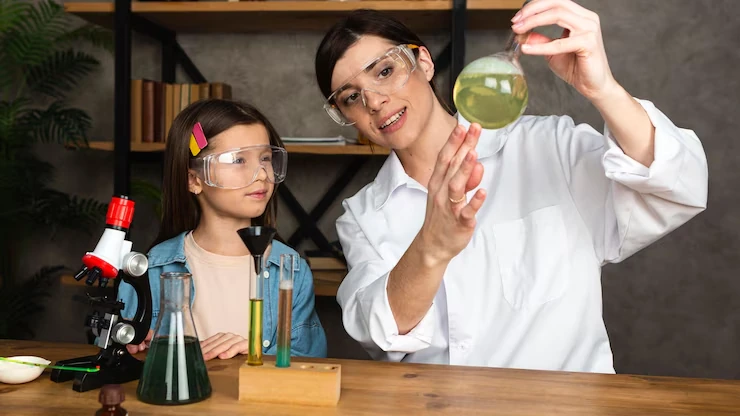The Science Behind AI Homework Helpers
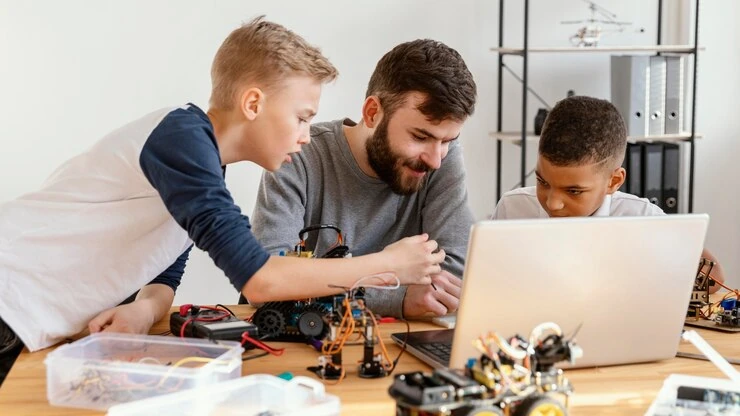
In recent years, artificial intelligence (AI) has become an essential tool in the world of education, transforming how students engage with various scientific disciplines. Whether in the realm of biology, chemistry, or physics, AI-driven tools have changed how students learn complex concepts, research, and conduct experiments. At Homeworkify, we are seeing more students and educators incorporate AI technologies into their studies, making science education more interactive, efficient, and accessible. This article explores how AI is being used in biology, chemistry, and physics to enhance learning experiences, provide deeper insights into scientific concepts, and support students in achieving better understanding.
The Role of AI in Science Education
Artificial intelligence is revolutionizing science education by providing students and educators with advanced tools to enhance learning, research, and problem-solving in subjects like biology, chemistry, and physics. AI technologies such as machine learning models, chatbots, and interactive simulations have become integral to how students approach scientific topics, improving conceptual understanding and fostering deeper engagement.
AI tools are particularly useful in providing personalized learning experiences. For example, platforms that use AI can track a student’s progress and suggest specific resources tailored to their needs. If a student struggles with a certain concept, such as chemical reactions in chemistry or genetics in biology, AI-powered systems can recommend relevant videos, articles, or quizzes to help reinforce their understanding. This ensures that learning is not a one-size-fits-all approach, but rather tailored to the individual’s pace and level of comprehension.
Moreover, AI is reshaping how students and teachers engage with science outside of traditional classrooms. Virtual labs and AI-powered tutors are helping students conduct experiments and receive real-time feedback, offering them hands-on experience even when they do not have access to physical lab equipment. This can be especially beneficial in school and university settings, where resources may be limited.
Personalizing the Learning Experience with AI
One of the key benefits of AI in science education is its ability to personalize the learning experience. AI systems analyze data from students’ activities and identify areas where they may need additional support. For example, in physics education, an AI tool might detect that a student is struggling with mechanics and suggest exercises or simulations to improve their understanding of this complex topic. Similarly, in biology, AI can track progress on understanding genetic sequences and direct students toward resources that explain concepts such as protein folding or enzymes.
By using AI to personalize education, students are able to learn at their own pace, receiving just the right amount of help when they need it, which enhances their conceptual understanding of key scientific principles. AI-powered systems can adapt as the student progresses, making learning both more efficient and effective.
AI in Biology Education: Enhancing Understanding of Biological Processes
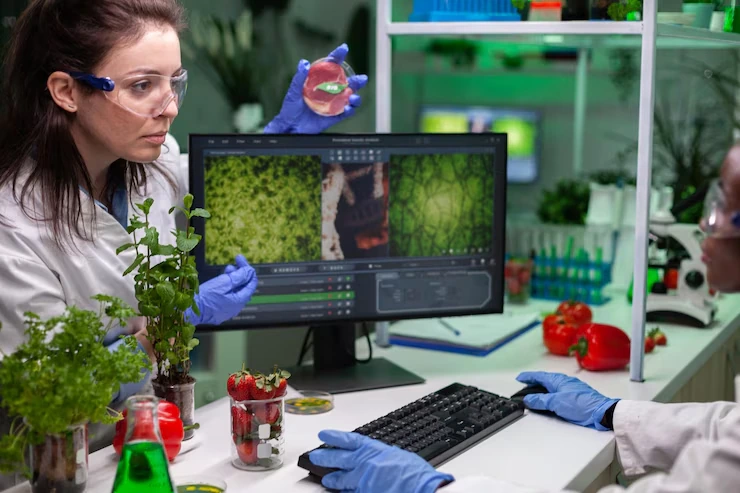
Biology is a subject rich in intricate concepts that can be difficult for students to fully grasp. AI tools are providing biology education with a range of resources that make learning more interactive and accessible. With AI, students can simulate biological processes, analyze genetic sequences, and explore complex topics such as evolution, cell biology, and genetic mutations.
Simulating Biological Processes with AI
AI-powered simulations allow students to conduct experiments virtually, giving them the opportunity to explore biological concepts without needing access to a physical lab. For example, AI systems can simulate how enzymes work or how the human genome is structured. Students can adjust parameters and see how different factors affect biological systems, providing them with a more hands-on understanding of biology.
One of the most significant advancements in AI for biology is AlphaFold, a deep learning tool developed by DeepMind. This AI system predicts the 3D structure of proteins, a fundamental aspect of biology and genetics. For students studying protein folding, this tool provides invaluable insights into how proteins function and how they can be affected by genetic mutations. AI’s role in biology education is not just about simplifying complex topics but making them more engaging and interactive.
Improving Research with AI in Biology
AI is also helping students with scientific research by analyzing large datasets and offering predictions. In biological research, AI can assist in analyzing the results of experiments, allowing students to understand and interpret data more quickly. For instance, AI can be used to analyze patterns in genetic sequences, providing insights into gene expression and mutations that may affect biological processes.
This ability to quickly analyze and interpret data accelerates students’ ability to conduct research, making them more effective in their studies and in contributing to the field of biology. Moreover, AI can assist in identifying gaps in existing research, enabling students to propose innovative research projects that explore uncharted areas of biology.
AI in Chemistry Education: Simulating Chemical Reactions and Molecular Structures
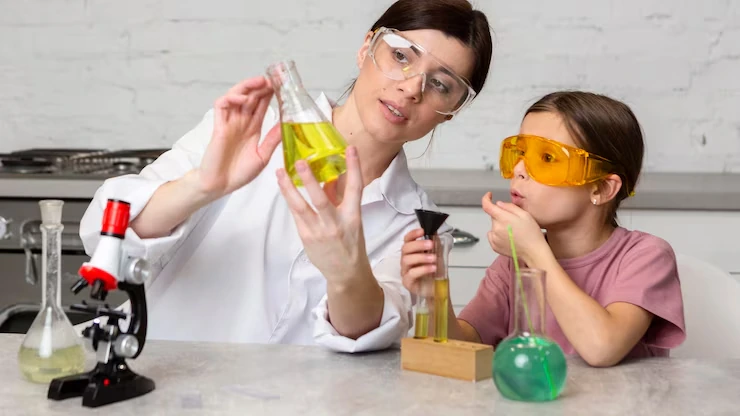
Chemistry is a subject that often challenges students due to its abstract nature and the complexity of the concepts involved. AI tools in chemistry are helping students visualize and simulate chemical reactions and molecular structures, thus making the learning process more concrete and interactive.
Visualizing Chemical Reactions with AI
AI tools allow students to simulate chemical reactions and explore how different chemicals interact. For instance, AI-powered platforms like Wolfram Alpha enable students to input chemical equations and receive detailed, step-by-step solutions along with explanations of the underlying chemical principles. This helps students gain a deeper understanding of the stoichiometry involved in chemical reactions, which can often be a challenging topic.
Additionally, AI can be used to model molecular structures, helping students visualize how atoms are arranged and how they bond with one another. This is especially useful for understanding organic chemistry, where the structure of molecules plays a critical role in determining their behavior and properties. By providing students with interactive 3D models of molecules, AI makes chemistry more tangible and easier to understand.
Supporting Chemistry Research with AI
In the field of scientific research, AI is enabling students to predict the outcomes of chemical reactions under various conditions. For example, machine learning algorithms can be trained to predict how specific chemical compounds will behave when combined. This allows students to conduct virtual experiments without using up valuable lab resources. Furthermore, AI can assist students in analyzing experimental results, helping them identify patterns and correlations that might not be immediately obvious.
AI in Physics Education: Solving Complex Physics Problems

Physics, with its focus on abstract principles and mathematical equations, can be challenging for students. However, AI is helping students tackle complex physics problems by providing them with step-by-step solutions, simulations, and visualizations that break down difficult concepts into manageable parts.
Breaking Down Physics Problems with AI
AI tools are designed to help students break down physics problems into smaller, more digestible steps. For example, in mechanics, AI can provide students with a detailed explanation of how to approach problems involving forces, motion, and energy. This allows students to better understand the relationships between different physical variables and apply problem-solving skills effectively.
AI models can also simulate physics experiments, allowing students to observe phenomena such as the behavior of electromagnetic fields, light waves, or particle interactions without needing to set up complex laboratory equipment. These simulations provide valuable insight into the physical world, helping students deepen their understanding of scientific concepts in physics.
AI in Research and Simulations in Physics
In research, AI is being used to simulate complex physical systems and make predictions based on experimental data. AI-powered tools are now capable of analyzing vast amounts of data from scientific experiments, helping researchers identify trends and patterns in phenomena like quantum mechanics and astrophysics. For physics students, AI tools provide access to research-grade simulations and offer opportunities to engage in cutting-edge studies.
Popular AI Tools for Science Students
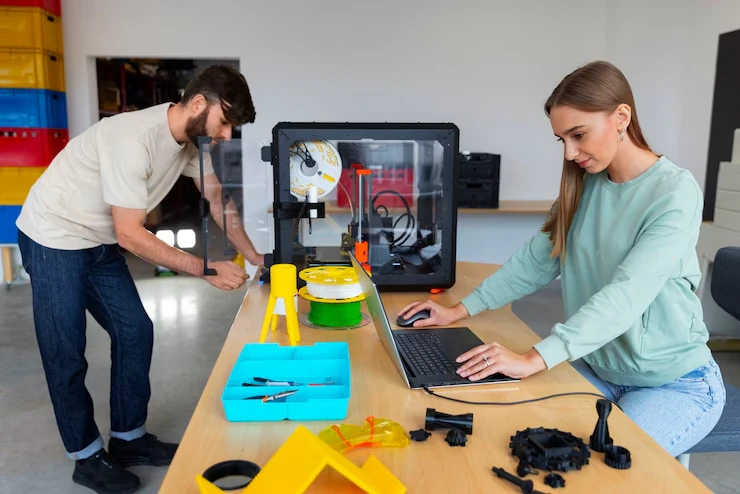
AI tools have become invaluable for students studying science, offering personalized assistance and interactive learning experiences. These tools support students in understanding complex topics in biology, chemistry, and physics. Below are some of the most popular AI tools that are enhancing the educational journey for science students.
ChatGPT: A Virtual Assistant for Science Students
One of the most well-known AI tools, ChatGPT, has proven to be an incredibly valuable resource for students studying various scientific subjects. This AI-driven chatbot is designed to help students with a wide range of topics in physics, chemistry, biology, and other scientific disciplines.
By simply typing in a question, students can receive immediate answers to queries related to scientific concepts, equations, and problem-solving. For instance, if a student is stuck on a genetics problem or a chemical reaction, they can ask ChatGPT to explain it in simple terms, offering them a deeper conceptual understanding. ChatGPT also helps students explore scientific research, offering explanations of experiments, terms, and formulas in a conversational manner that helps retain knowledge more effectively.
Furthermore, ChatGPT is designed to adapt its responses based on the complexity of the student’s question, providing answers suited to the student’s level of knowledge. This makes it an ideal virtual assistant, ensuring that students at various educational levels—from school to university—can benefit from its capabilities.
PhET Interactive Simulations: Visualizing Science Concepts
PhET Interactive Simulations, developed by the University of Colorado Boulder, is an AI-powered platform that provides students with interactive simulations in physics, chemistry, and biology. The platform is designed to bring abstract concepts to life, allowing students to visualize phenomena that are difficult to understand in a traditional classroom setting.
For example, in physics, students can simulate the behavior of forces, motion, and energy, adjusting parameters and seeing how they impact the system. In chemistry, they can simulate chemical bonding and visualize how molecules interact under different conditions. In biology, students can explore genetic inheritance, the structure of proteins, and various biological processes in a highly interactive, engaging way.
By offering these interactive simulations, PhET helps students engage with scientific concepts in a more meaningful and tangible way. This hands-on learning method has been proven to enhance conceptual understanding and make learning more enjoyable.
Wolfram Alpha: A Computational Knowledge Engine for Science Problems
Wolfram Alpha is another powerful AI tool used extensively by science students. It functions as a computational knowledge engine, helping students solve problems related to mathematics, physics, chemistry, biology, and even general science. Students input questions or mathematical equations, and Wolfram Alpha processes the information and generates step-by-step solutions, complete with detailed explanations.
For chemistry students, Wolfram Alpha can balance chemical equations, predict the outcomes of chemical reactions, and explain key concepts like stoichiometry and thermodynamics. Physics students can use it to solve mechanics problems, while biology students can study genetic sequences and other biological phenomena.
The ability to generate solutions in real-time makes Wolfram Alpha an indispensable tool for students who need quick, accurate answers to their science-related questions. It also helps students understand the logic behind each solution, strengthening their problem-solving abilities.
DeepMind’s AlphaFold: Revolutionizing Protein Folding
AlphaFold, developed by DeepMind, is an AI system that predicts the 3D structure of proteins with unprecedented accuracy. Understanding protein folding is a crucial aspect of genetics and biochemistry, as the shape of a protein determines its function within a cell.
For biology students, AlphaFold provides an invaluable learning tool by allowing them to explore protein structures in 3D and gain a deeper understanding of genetic mutations and enzymatic functions. It also serves as a vital tool for scientific research, particularly in the fields of drug discovery and disease research, where understanding protein structure is key to developing new treatments.
This groundbreaking tool has become a must-have resource for advanced biology students and researchers. By using AlphaFold, students can directly interact with data that was previously out of reach, deepening their understanding of biological systems and encouraging exploration in the realm of protein science.
How AI is Shaping the Future of Science Education

AI is unquestionably shaping the future of science education by providing innovative tools that enhance how students learn, conduct research, and engage with scientific topics. As AI technologies continue to advance, students will have access to even more powerful tools for exploring complex concepts in biology, chemistry, and physics.
AI tools like machine learning models and natural language processing algorithms will allow for more personalized education, where students can receive real-time feedback and adapt their learning based on individual needs. Additionally, AI-driven simulations will offer students the opportunity to explore scientific concepts hands-on, providing a deeper understanding of theoretical principles.
Furthermore, AI’s role in scientific research will continue to grow, giving students access to cutting-edge resources for exploring genetic sequences, protein structures, and climate change models. By leveraging AI, science education will become more engaging, efficient, and accessible, ensuring that students are better equipped to tackle the challenges of the future.
Frequently Asked Questions
How is AI used in science education?
AI is used in science education to enhance learning experiences, provide real-time feedback, and help students grasp complex concepts in fields like biology, chemistry, and physics. Tools such as chatbots, simulations, and machine learning models allow for personalized learning and problem-solving assistance.
What are some AI tools for biology students?
For biology students, popular AI tools include AlphaFold for protein folding simulations, Wolfram Alpha for problem-solving, and PhET Interactive Simulations for visualizing biological processes like genetic inheritance.
Can AI help students with chemistry problems?
Yes, AI tools like Wolfram Alpha and PhET simulations help chemistry students by solving chemical equations, predicting chemical reactions, and visualizing molecular structures.
What is the future of AI in science education?
The future of AI in science education includes more advanced tools for personalized learning, real-time feedback, and simulations. AI is expected to further support scientific research and discovery, providing students with resources to explore complex topics in greater depth.
How does AI support science teachers?
AI supports science teachers by providing tools for lesson planning, grading, and offering data-driven insights into student performance. These technologies help educators better address individual learning needs and improve educational outcomes.

